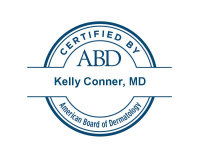Warts are growths on the skin that are caused by a virus, the human papillomavirus (HPV). They are extremely common in both
children and adults, and are contagious. Warts do eventually go away on their own as the immune system responds to the virus. Unfortunately,
this can sometimes take years and warts can be unsightly, painful, and can spread to other areas of the body. At home treatments
can be tried first or in combination with in-office procedures and prescription treatments.
The home treatments usually contain
17% salicylic acid. This comes in liquid form (Compound W Fast Acting Liquid), solid-stick form (Wart Stick), or it can come within
a band aid (Dr Scholl’s Clear Away) or a self-adhesive sticker (Curad Mediplast). The freeze kits tend to be less effective in our
experience as it doesn’t get cold enough to adequately kill viral-infected cells.
In the office we can do several types of treatment:
•Liquid
Nitrogen Cryotherapy: a very cold spray is applied to kill the infected cells and slow/stop local viral activity. This can be painful
and local anesthesia with lidocaine injection is offered though most people do fine without it. If the lesion is very thick, the top
layer can be removed by paring it down prior to freezing.
–A blister will form within 1-2 days. This can be left intact or can be drained
with a sterile needle. Cover with Band-Aid or leave open to the air. Blisters may be impressive and extend far outside the area that
was treated. This is normal and usually a good sign you had an adequate treatment.
–Ibuprofen or Tylenol can be used for pain if needed.
–In
5-7 days, the blister will peel off, hopefully with all or most of the wart.
–Start applying your home treatment (salicylic acid, wartpeel,ect) every day.
–Return to the clinic in 3-4 weeks for evaluation and possibly additional treatment.
–Never stop treating the wart if
it still present, even if this takes weeks or months. You don’t want to lose the ground you have gained so far! The War of the Warts
isn’t over till it’s over.
•Candida/Trichophyton antigen immunotherapy: injections into the wart or the largest of the warts to trigger
an immune response to the virus. This is frequently paired with cryotherapy described above. Repeat injections every 3-4 weeks is
recommended up to 4 times to see full result. Mild swelling can occur and very rarely temporary flu-like symptoms as the immune system
activates.
•Cantharidin Plus: a topical treatment containing 30% salicylic acid, 2% podophyllin, and 1% cantharidin, derived from
blistering beetles. Application is painless while burning or discomfort may occur over the next day. Occlusion with a bandaid after
application for at least 24 hours is recommended. A large blister forms the first 1-2 days, lifting off the wart.
•Be aware thatin-office procedures may apply to your deductible and may not be covered under the copay. It is important for you to be familiar with
your insurance plan prior to undergoing any of the above treatments or you may incur out-of-pocket costs.
Prescription topicals
•Salicylic
acid at concentrations higher than over-the-counter preparations.
•5-flurouracil specifically targets cells that are growing too rapidly
(virus-infected cells)
•Compounded combinations of salicylic acid and 5-flurouracil (Wartpeel): ~$90
•Apply nightly under occlusion
with tape or bandaid. Treatment should continue for weeks or months until complete resolution of the wart. See www.wartpeel.com for
video of wartpeel application.
Alternative/Adjunctive treatments
•Cimetidine is a prescription antacid medication that
has been shown to increase the body’s immune response to HPV . The treatment course is usually 2-4 months. This treatment is usually
added in children with multiple warts. In adults it seems less effective.
•Zinc sulfate (not gluconate) has been reported to help boost
the immune system. The dose is 440 mg daily for adults (two of the 220mg pills). Children can also do this but dosing is based on
weight and the physician needs to determine a safe dose. Treatment should be for several months. Stomach upset can be a side effect.
Zinc gluconate is what is commonly sold in stores so you need to order the sulfate version online, at a specialty pharmacy, or just
ask your pharmacist for help.
•Shave removal followed by curettage. Usually surgical modalities are only a last resort as scarring
occurs and wart can recur within the scar which is not very pretty. Ideal for small resistant warts in adults who understand and accept
the risks.
The most important part of all of this is the following:
There is no specific treatment that works 100% of the time.
It often takes multiple treatments and office visits to resolve a wart.
Warts spread by contact so you may develop new warts.
Warts
can recur in the same place as previously treated.
New warts can appear around/near warts being treated during treatment.
Treatment
can leave a scar or pigment alteration.
Treatments can be expensive and time consuming.
You may have to meet a deductible before insurance
helps financially.
Don’t give up! If you leave 1% of the wart…it will recur!!









